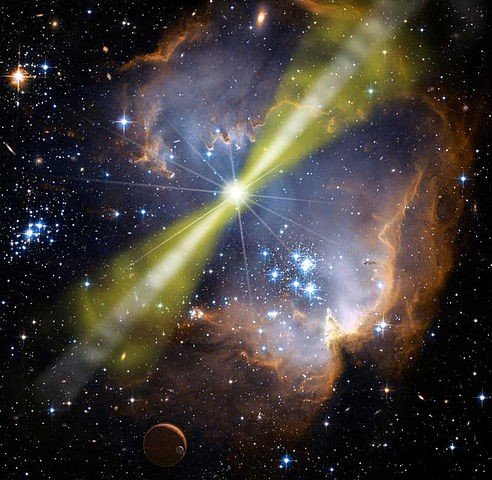Discuss about the Ladakh Secures GI tag for Sea Buckthorn
Ladakh Secures GI tag for Sea Buckthorn
- The Geographical Indication Registry has officially granted the GI tag to ‘Ladakh sea Buckthorn’.
- After Apricot, Pashmina and Ladakhi Wood Carving, this is the fourth product to get a GI tag in Ladakh
About Sea Buckthorn:
- Sea buckthorn (Hippophae rhamnoides) is a plant found throughout Europe and Asia.
- In India, it is found above the tree line in the Himalayan region, generally in dry areas such as the cold deserts of Ladakh and Spiti.
- It is naturally distributed over 11,500 hectares in the Ladakh region.
- It produces small orange or yellow-coloured berries that are sour in taste but rich in vitamins, especially vitamin C.
- The shrub can withstand extreme temperatures ranging from minus 43 degrees Celsius to 40 degrees Celsius and is considered drought-resistant. These two characteristics make the shrub an ideal plant species to establish in cold deserts.
- Sea Buckthorn berries have the unique characteristic of remaining intact on the shrub throughout the winter months despite the subzero temperature.

Significance:
- It has been used traditionally for a variety of purposes.
Every part of the plant—fruit, leaf, twig, root, and thorns—has been traditionally used as medicine, nutritional supplement, fuel, and fence. - Many bird species feed on the berries when other sources of food are limited in the region.
- The leaves serve as protein-rich fodder for cold desert animals like sheep, goats, donkeys, cattle, and double-humped camels.
- Therefore, it is popularly known as the ‘Wonder Plant’, ‘Ladakh Gold’, ‘Golden Bush’, or ‘Gold Mine’ of cold deserts.
Gamma-Ray Burst
- Gamma Ray Burst are the most powerful class of explosions in the universe, and they occur when massive stars die.
- When a massive star collapses, it creates a black hole, and the energy released during this process produces jets of high-energy particles that travel almost at the speed of light.
- These jets pierce through the collapsing star, producing X-ray and gamma rays, which can be detected by observatories on Earth and in space.
- Types of GRBs:
- Long-duration gamma-ray bursts (LGRBs):
- LGRBs last for more than two seconds and are thought to be caused by the collapse of massive stars, known as supernovae.
- These explosions release a tremendous amount of energy and create a black hole at their centre.
- LGRBs are the most common type of GRB and can be observed from distant galaxies.
- Short-duration gamma-ray bursts (SGRBs):
- SGRBs last for less than two seconds and are thought to be caused by the collision of two compact objects, such as neutron stars or a neutron star and a black hole.
- SGRBs are much rarer than LGRBs, are more difficult to observe and typically located closer to our galaxy.
- Long-duration gamma-ray bursts (LGRBs):
More about GRB 221009A
- In October 2022, astronomers recorded the brightest gamma-ray radiation (named GRB 221009A) of all time, which could overturn a long-standing theory of GRB jets.
- A gamma-ray burst that recently hit our solar system was so bright, it temporarily blinded gamma-ray instruments in space, according to a NASA release.
- The observation was conducted jointly by Center for Astrophysics, Harvard and Smithsonian’s Submillimeter Array (SMA) in Hawaii, the MeerKAT Array in South Africa, the US National Science Foundation’s Karl G Jansky Very Large Array (VLA) in New Mexico (USA), the Atacama Large Millimetre Array in Chile and NCRA’s Giant Meterwave Radio telescope, India.

- About:
- GRB 221009A was detected in October 2022, by NASAs Fermi Gamay-ray Space Telescope, Neil Gehrels Swift Observatory, and Wind spacecraft.
- The signal originated from the direction of the constellation Sagitta, and it took approximately 1.9 billion years to reach Earth.
- The 5-minute-long radiation pulse was the brightest GRB ever and nearly 70 times brighter than any other such eruption ever observed.
- Observation from GRB 221009A:
- The pulse of radiation was unusually bright and long-lasting, which made it stand out from other gamma-ray bursts.
- The signal triggered detectors at multiple observatories, indicating its strength and duration.
- Researchers about 221009A:
- “Long-duration” GRBs occur when the core of a massive star collapses under its own weight, giving birth to a black hole.
- This formation produces powerful plasma jets that shoot gamma rays at almost the speed of light. When these jets collide with the gas surrounding the dying star, a bright afterglow is produced across the spectrum.
- Significance:
- Astronomers from the National Centre for Radio Astrophysics in India concluded that the signal was a birth cry of a black hole
- GRB 221009A provides astronomers with valuable insights into the formation of black holes and the mechanisms that produce gamma-ray bursts.
- The detection of GRB 221009A will help astronomers refine their understanding of the conditions required for the formation of black holes and the production of gamma-ray bursts.
PM Awas Yojana Gramin
- The Pradhan Mantri Awas Yojana Gramin (PMAY-G) is a program by the Indian government to provide affordable housing for the rural poor. The program aims to construct 2.95 crore pucca houses with basic amenities
- The Ministry of Rural Development has been implementing the program since April 1, 2016. As of July 19, 2023, 2.92 crore houses have been sanctioned to beneficiaries and 2.41 crore houses have been completed
The Targeted group:
- Economically weaker sections (EWS)
- Lower-income groups (LIG)
- Middle-income groups (MIG)
The 2023-24 budget estimate for the Awas Yojana is:
- PMAY-Urban: Rs 25,103 crore
- PMAY-Gramin: Rs 54,487 crore
About the PMAY-G:
- Although Indira Awas Yojana (started in 1996) addressed the housing needs in the rural areas, certain gaps were identified (lack of transparency in selection of beneficiaries, low quality houses, weak monitoring, etc) by CAG in 2014.
- To address these gaps in the rural housing program and in view of the Government’s commitment to providing “Housing for All’’ by 2022, the IAY has been restructured into PMAY-G w.e.f. 1st April 2016.
- PMAY-G aims at providing a pucca house, with basic amenities, to all houseless householders and those households living in kutcha and dilapidated houses, by 2022.
- The immediate objective is to cover 1.00 crore households living in kutcha houses/ dilapidated houses in three years from 2016-17 to 2018- 19.
- According to data available, of the Centre’s allocation of 2.93 crore houses till July 17 2023, 2.90 crore have been sanctioned, of which 2.31 crore have been completed
Salient Features of the PMAY-G:
- The minimum size of the house has been increased to 25 sq.mt (from 20 sq.mt) with a hygienic cooking space.
- The unit assistance has been increased
- From Rs 70,000 to Rs 1.20 lakh in plain (to be shared in the ratio 60:40 between Central and State Government) and
- From Rs 75,000 to Rs 1.30 lakh for North Eastern and the Himalayan States (90:10).
- The assistance for construction of toilets shall be leveraged through convergence with SBM-G, MGNREGS or any other dedicated source of funding.
- For convergence for piped drinking water, electricity connection, LPG gas connection, etc., different government programmes are also to be attempted
What makes PMAY-G unique?
- PMAY-G instead of selecting the beneficiary from among the BPL households, selects them using housing deprivation parameters in the SECC 2011 which is to be verified by the Gram Sabhas.
- Towards better quality of construction, setting up of a Nation Technical Support Agency (NTSA) at the national level is envisaged.
- Also, a pan-India training and certification programme of Masons has been launched in the States/UTs.
- In PMAY-G, programme implementation and monitoring are to be carried out through an end-to-end e-Governance model – using Awaas Soft and Awaas App.
- Also, the programme implementation is to be monitored through community participation (Social Audit), Member of Parliament (DISHA Committee), etc
